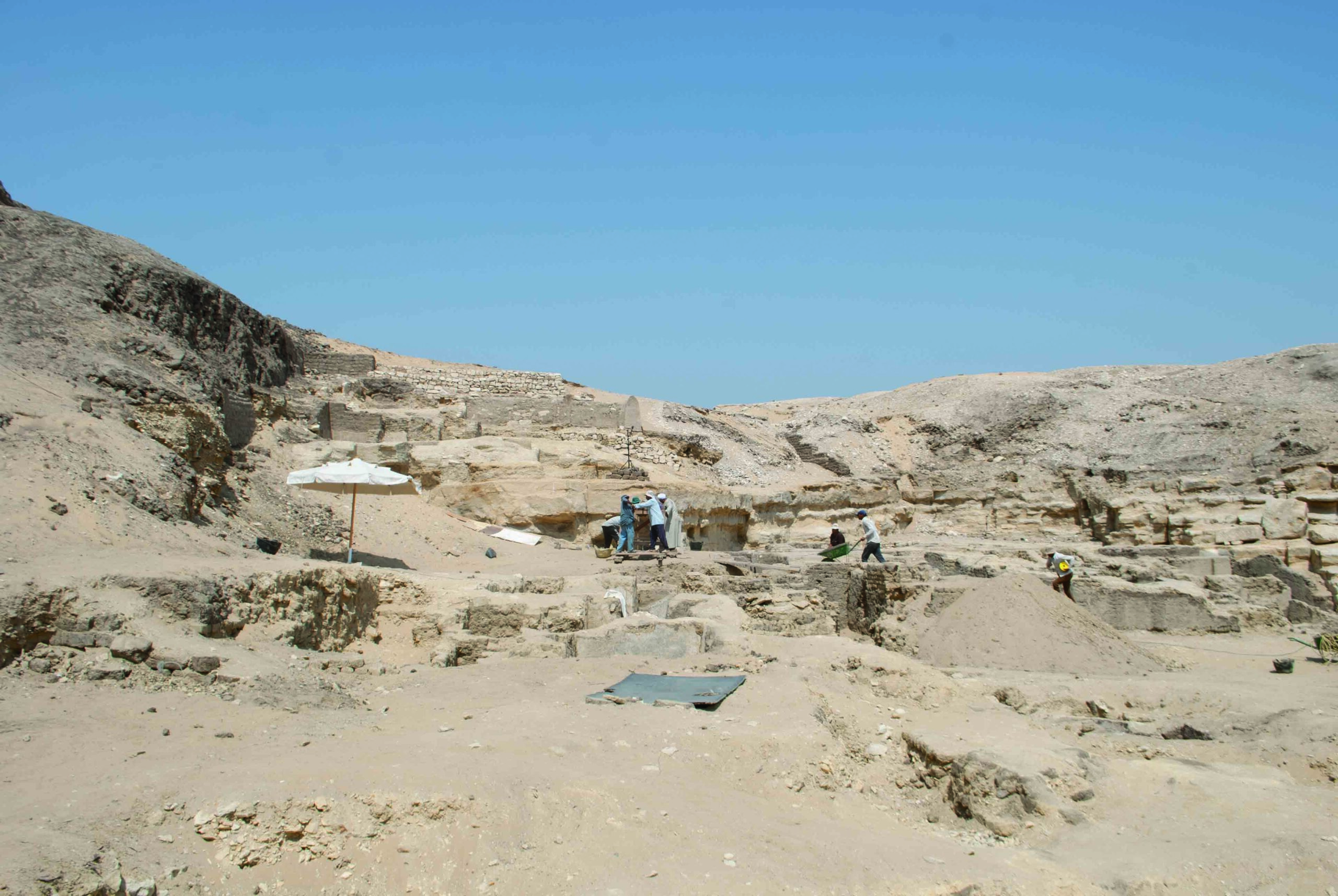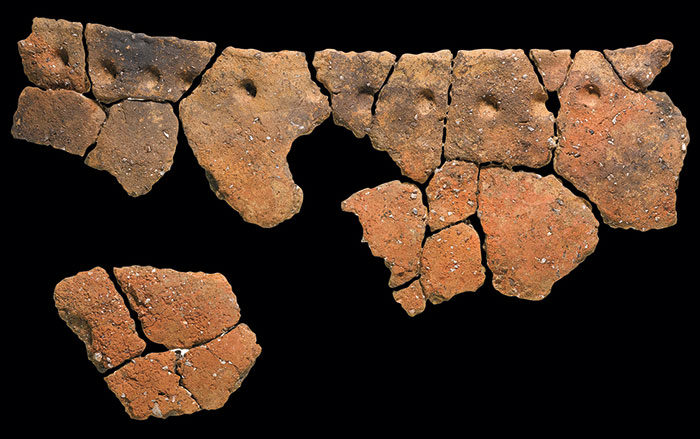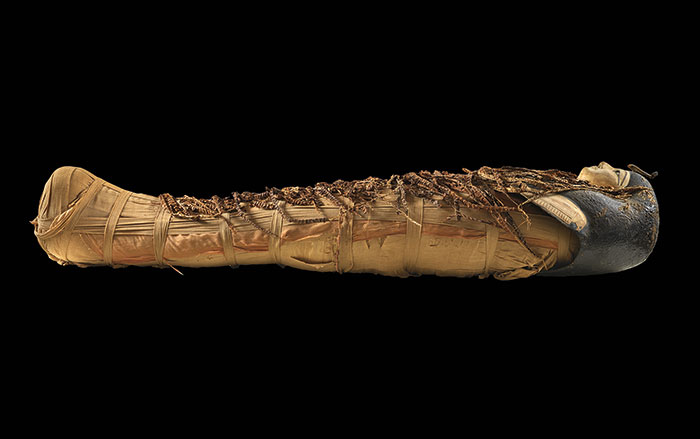
Within three deep burial shafts in a section of the Saqqara necropolis known as the Area of Sacred Animals, archaeologists have unearthed 100 vividly painted wooden coffins containing the mummified remains of individuals who traveled to the afterlife some 2,500 years ago. The sealed sarcophagi were found stacked atop one another alongside 40 statues of the funerary deity Ptah-Sokar-Osiris and a bronze sculpture of the lotus-flower god Nefertum. Although the shafts were reopened multiple times in antiquity to inter more people, researchers have dated all the burials to the 26th Dynasty (688–525 B.C.) based on names inscribed on the coffins. “These kinds of shafts, which contain many burials, possibly for a family or group, were common during this period,” says Mostafa Waziri, secretary-general of Egypt’s Supreme Council of Antiquities. “We think that the owners of these coffins are the priests and high officials of the temple of the cat goddess, Bastet.”












